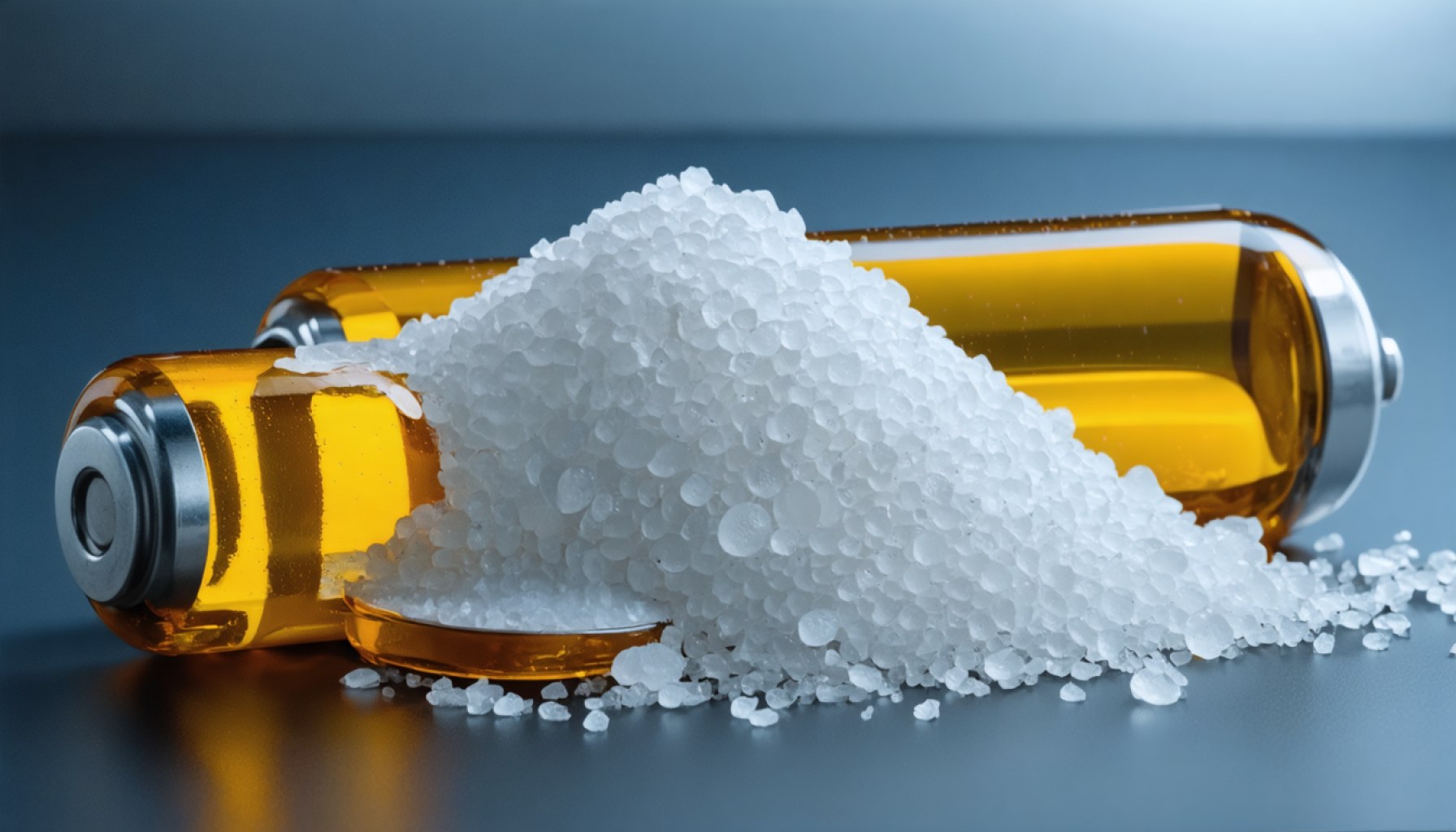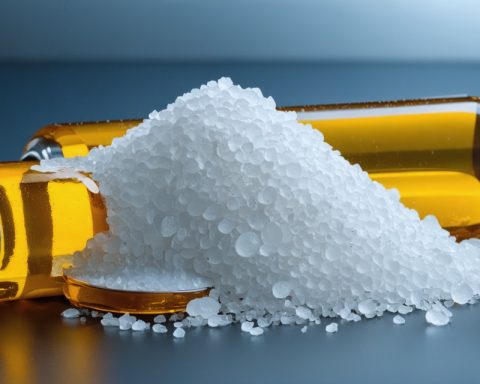- Princeton University researchers have developed a highly efficient sodium-ion battery using a novel organic cathode material, bis-tetraaminobenzoquinone (TAQ).
- Sodium, an abundant element, emerges as a sustainable alternative to lithium, addressing lithium supply chain concerns.
- The TAQ material provides remarkable stability and conductivity, enhancing the battery’s performance and energy density.
- This innovation offers potential applications in electric vehicles, data centers, and renewable energy systems.
- Optimized design utilizing carbon nanotubes has led to an electrode-level energy density of 606 Wh/kg and excellent cycling stability.
- The sodium-ion battery development signifies a significant step toward a sustainable energy future, with sodium possibly becoming the primary energy source.
Imagine electric vehicles that charge faster, drive longer, and rely on an element as common as table salt. In a groundbreaking development, researchers at Princeton University have devised a sodium-ion battery that challenges the supremacy of lithium with stunning efficiency and power. At the heart of this technological marvel lies a new organic cathode material known as bis-tetraaminobenzoquinone, or TAQ.
As clouds of uncertainty gather over the lithium supply chain, the spotlight turns to sodium—an element that promises sustainability without scarcity. While sodium-ion batteries have struggled with energy density in the past, this innovation alters the narrative, offering a tantalizing alternative with vast implications for electric vehicles, data centers, and renewable energy systems.
The brilliance of the TAQ material lies in its remarkable stability and conductivity. These properties ensure a robust, enduring performance, allowing sodium-ion batteries to nearly reach their theoretical limits. Imagine a future where the energy density of these batteries rivals that of lithium-ion counterparts—cars could roam farther, and devices could run longer before craving a recharge.
This achievement is more than a science experiment—it’s an insightful leap toward a greener, more sustainable world. Researchers meticulously tailored the design, harnessing the power of carbon nanotubes to create a harmonious mix that optimized the battery’s potential. The astonishing results—an electrode-level energy density of 606 Wh/kg and exceptional cycling stability—paint a promising picture.
The sodium-ion revolution is on the horizon, edging ever closer to transforming how we store and harness energy. As researchers refine their techniques, the era of sodium as the primary power source seems not only plausible but inevitable. Perhaps, in sodium, we have found the key to unlocking a sustainable future.
Revolutionary Sodium-Ion Batteries: A Game-Changer for the Future
How To Steps & Life Hacks
1. Understanding Battery Basics: Before diving into sodium-ion technology, familiarize yourself with basic battery principles, like energy density and charge cycles.
2. Adopting Sodium-Ion Technology: As the technology matures, watch for consumer electronics and vehicles featuring sodium-ion batteries. Early adopters might access government incentives for using more sustainable technology.
3. Maintaining Sodium-Ion Batteries: Follow manufacturer guidelines to extend battery life—avoid extreme temperatures and maintain a partial charge to maximize longevity.
Real-World Use Cases
1. Electric Vehicles (EVs): Sodium-ion batteries could reduce EV costs by using sodium, which is more abundant and less expensive than lithium.
2. Data Centers: Advanced sodium-ion batteries could offer more sustainable backup power solutions for data centers, essential for uninterrupted service.
3. Renewable Energy Storage: With improvements in energy density, sodium-ion batteries could effectively store solar and wind energy, supporting grid stability.
Market Forecasts & Industry Trends
– Projected Growth: The sodium-ion battery market is anticipated to expand significantly in the next decade, driven by material availability and environmental benefits.
– Industry Adoption: Major companies are investing in research and pilot programs to integrate sodium-ion technology into their product lines.
Reviews & Comparisons
– Sodium-Ion vs. Lithium-Ion: While lithium-ion remains prevalent, sodium-ion’s advantages include cost-effectiveness and reduced environmental impact due to sodium’s abundance.
– Expert Opinions: Battery experts emphasize sodium-ion’s potential to complement rather than replace lithium-ion technology, especially in high-volume applications.
Controversies & Limitations
1. Energy Density Concerns: Despite improvements, sodium-ion batteries still struggle to match the energy density of lithium-ion, which can impact performance for some applications.
2. Scalability: As a new technology, large-scale production challenges remain, including manufacturing processes and supply chain development.
Features, Specs & Pricing
– Energy Density: The TAQ material enables an energy density of up to 606 Wh/kg.
– Cycling Stability: Exceptional cycling stability promises a longer lifespan for sodium-ion batteries compared to existing alternatives.
– Projected Cost: Sodium’s abundance suggests lower production costs than lithium-ion batteries, although market pricing will depend on production scale and technological advancements.
Security & Sustainability
– Environmental Impact: Sodium is far less damaging to extract and refine than lithium, presenting a reduced ecological footprint.
– Resource Availability: With abundant sodium reserves worldwide, concerns over supply shortages are vastly diminished.
Insights & Predictions
– Market Penetration: Within the next five years, sodium-ion batteries are expected to make significant inroads into markets dominated by lithium-ion technology.
– Technological Developments: Continuous R&D is likely to yield further improvements in energy density and charge cycles, propelling sodium-ion batteries to new heights.
Pros & Cons Overview
Pros:
– Environmentally friendly and sustainable
– Lower production costs
– Enhanced safety profiles
Cons:
– Currently lower energy density
– Uncertain market readiness
– Limited infrastructure for mass production
Actionable Recommendations
1. Stay Informed: Follow developments in battery technology; consider future investments in sodium-ion batteries for eco-friendly personal and commercial use.
2. Support Sustainable Practices: Encourage and support companies that invest in sustainable battery technologies.
3. Evaluate Long-Term Costs: Consider the cost-benefit ratio of transitioning to sodium-ion technology, particularly its environmental benefits and potential cost savings.
For more information regarding advancements in sustainable technologies, visit Princeton University’s website.








